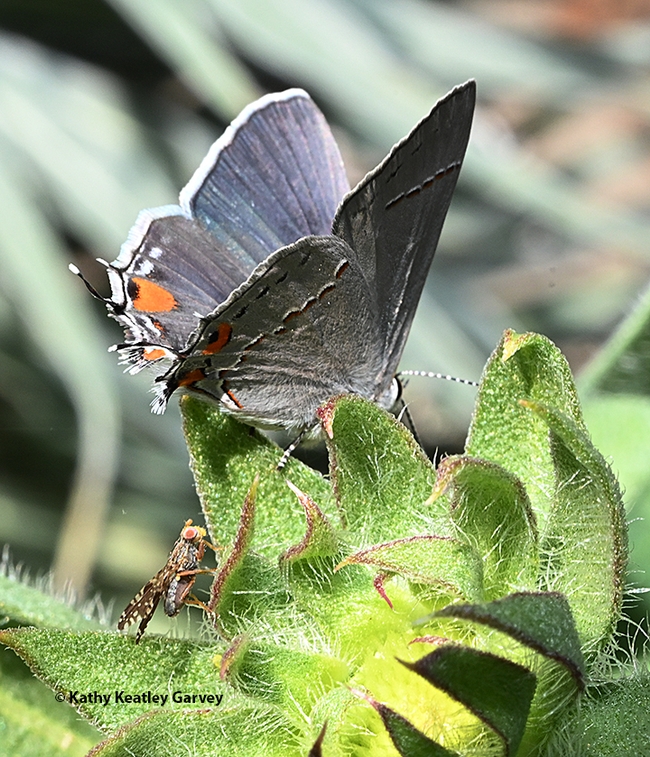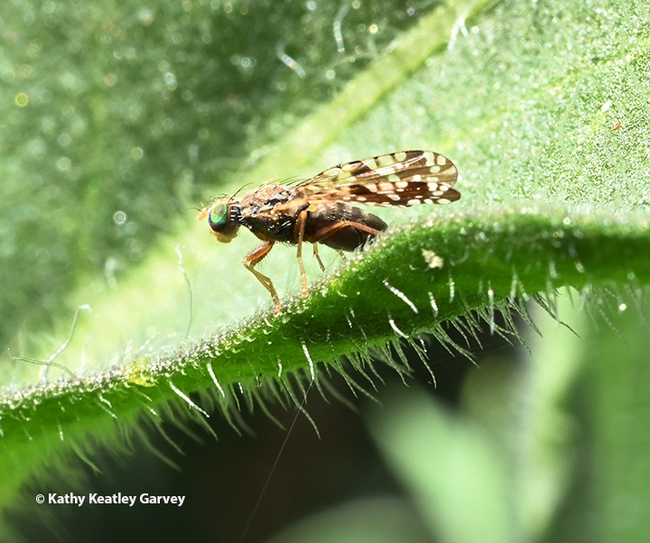A gray butterfly and a fruit fly...
Each has "fly" in its name but one is a member of the order Lepidoptera and the other, order Diptera. Etymology does not agree with entomology.
Ever managed to photograph a butterfly and fruit fly in the same image?
Presenting: a gray hairstreak butterfly, Strymon melinus, and a fruit fly, Neotephritis finalis, an organism commonly known as "the sunflower seed maggot."
They were foraging March 21 in a Vacaville garden on Coreopsis, a genus of flowering plants in Asteraceae.
N. finalis, one of the most commonly seen fruit flies (tephritids) flies in North America. develops in the seed heads of plants in the sunflower family. They're also called "picture-winged flies." BugGuide.net tells us "Wings are mostly dark in apical half with six hyaline spots forming a distinct triangle."
The wings are indeed striking!
But so are the wings of the gray hairstreak butterfly. That orange spot with a black dot on the hindwing probably resembles an eye to a predator.
Butterfly guru Art Shapiro, UC Davis distinguished professor emeritus, says on his research website that the gray hairstreak "is one of the most polyphagous butterflies known, recorded on host plants in many families. Its most frequent hosts in our area are mallows, including the weedy species of Malva; legumes, including Spanish Lotus (Lotus purshianus), Bird's-Foot Trefoil (Lotus corniculatus), White Clover (Trifolium repens) in lawns, Alfalfa (Medicago sativa) and many others; and Turkey Mullein (Eremocarpus or Croton setigerus, Euphorbiaceae)."
Maybe we'll see the butterfly and the fruit fly again...
Attached Images:

A fruit fly, Neotephritis finalis, peers up at a gray hairstreak butterfly, Strymon melinus, in a bed of Coreopsis. (Photo by Kathy Keatley Garvey)

Closeup of a fruit fly, Neotephritis finalis, an organism commonly known as a "sunflower seed maggot." Green is reflected in its eyes. (Photo by Kathy Keatley Garvey)